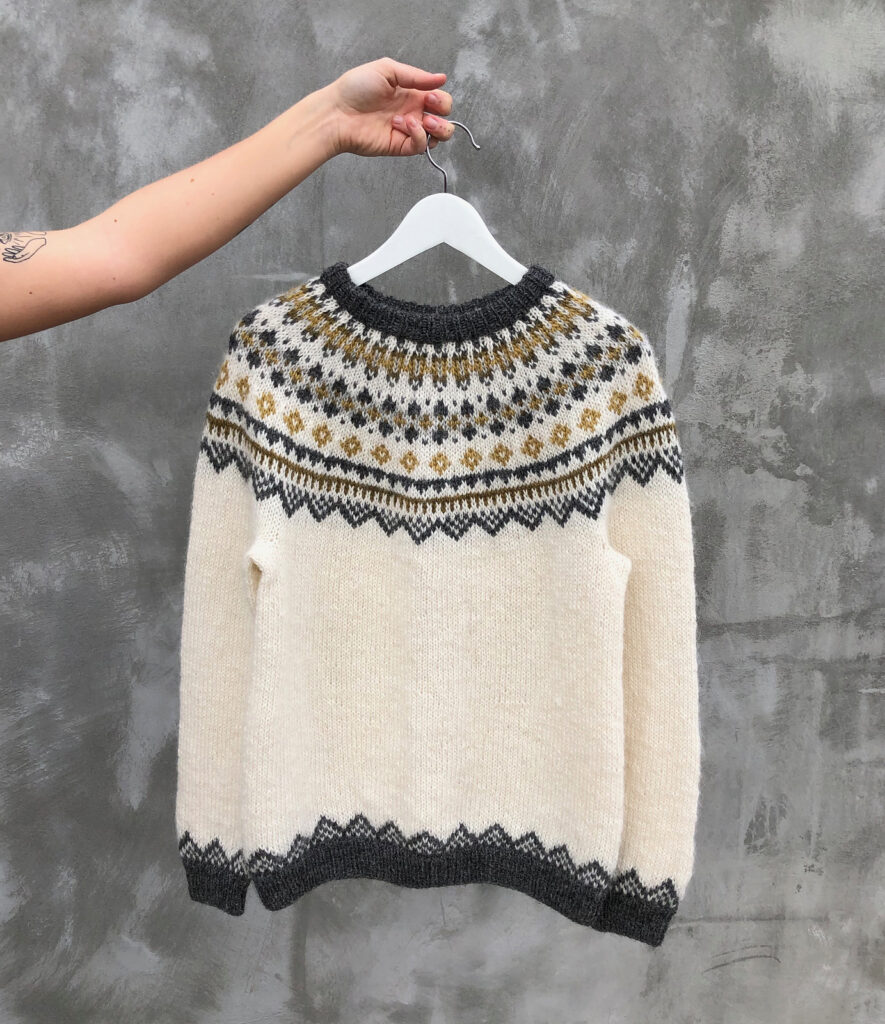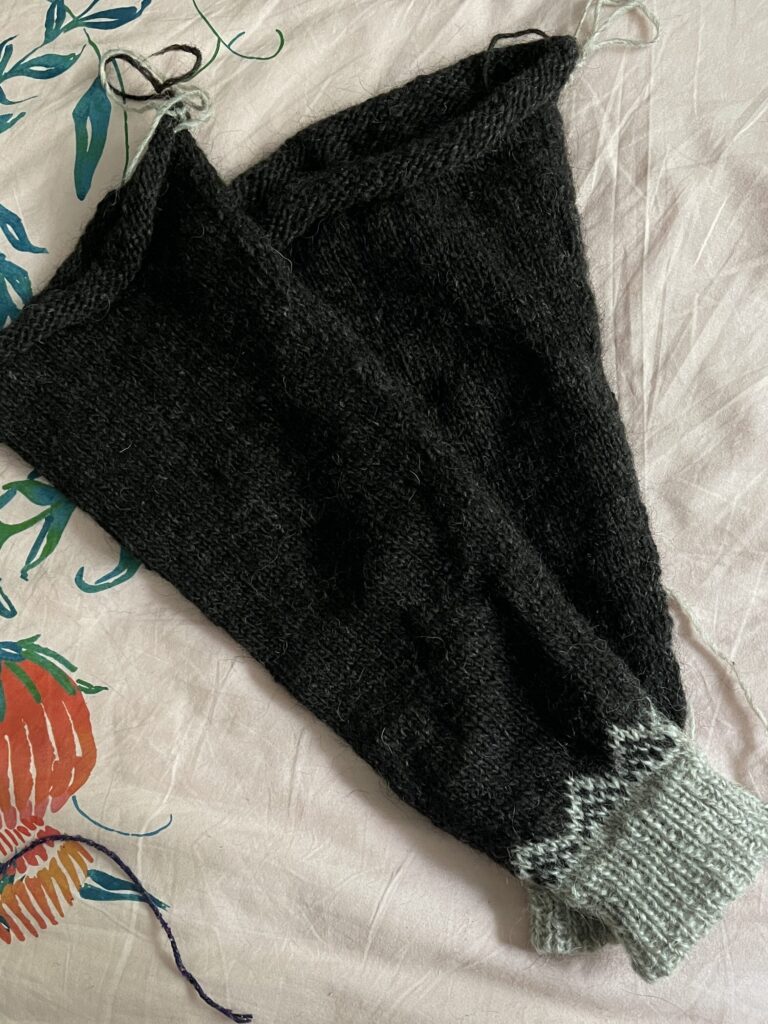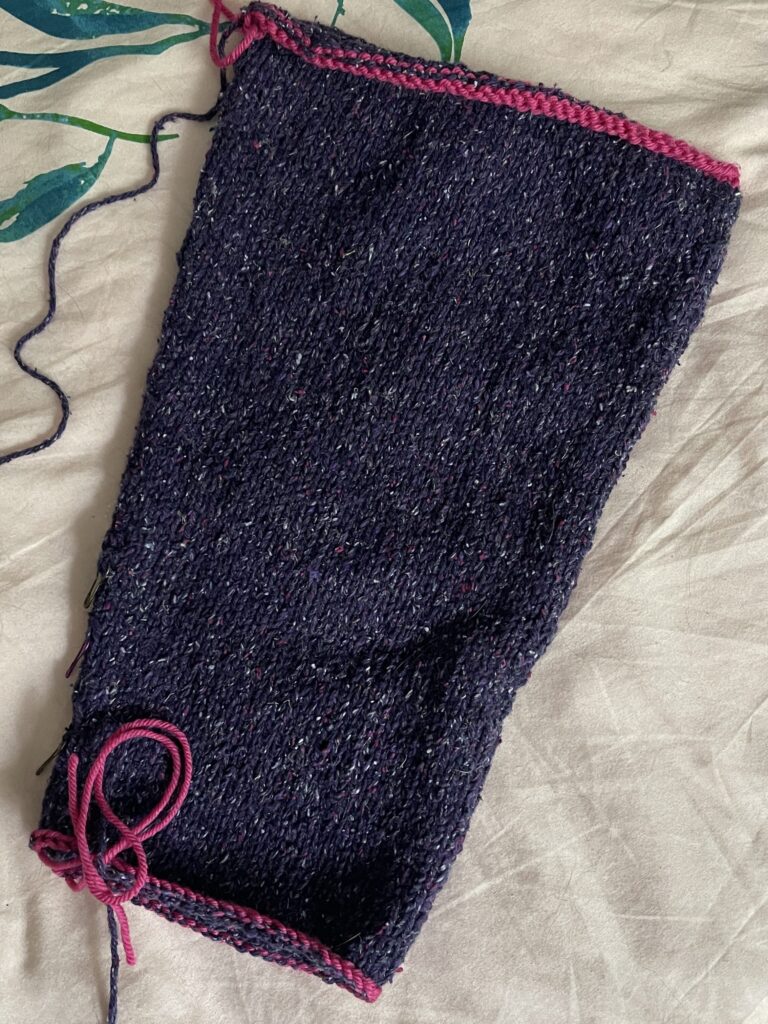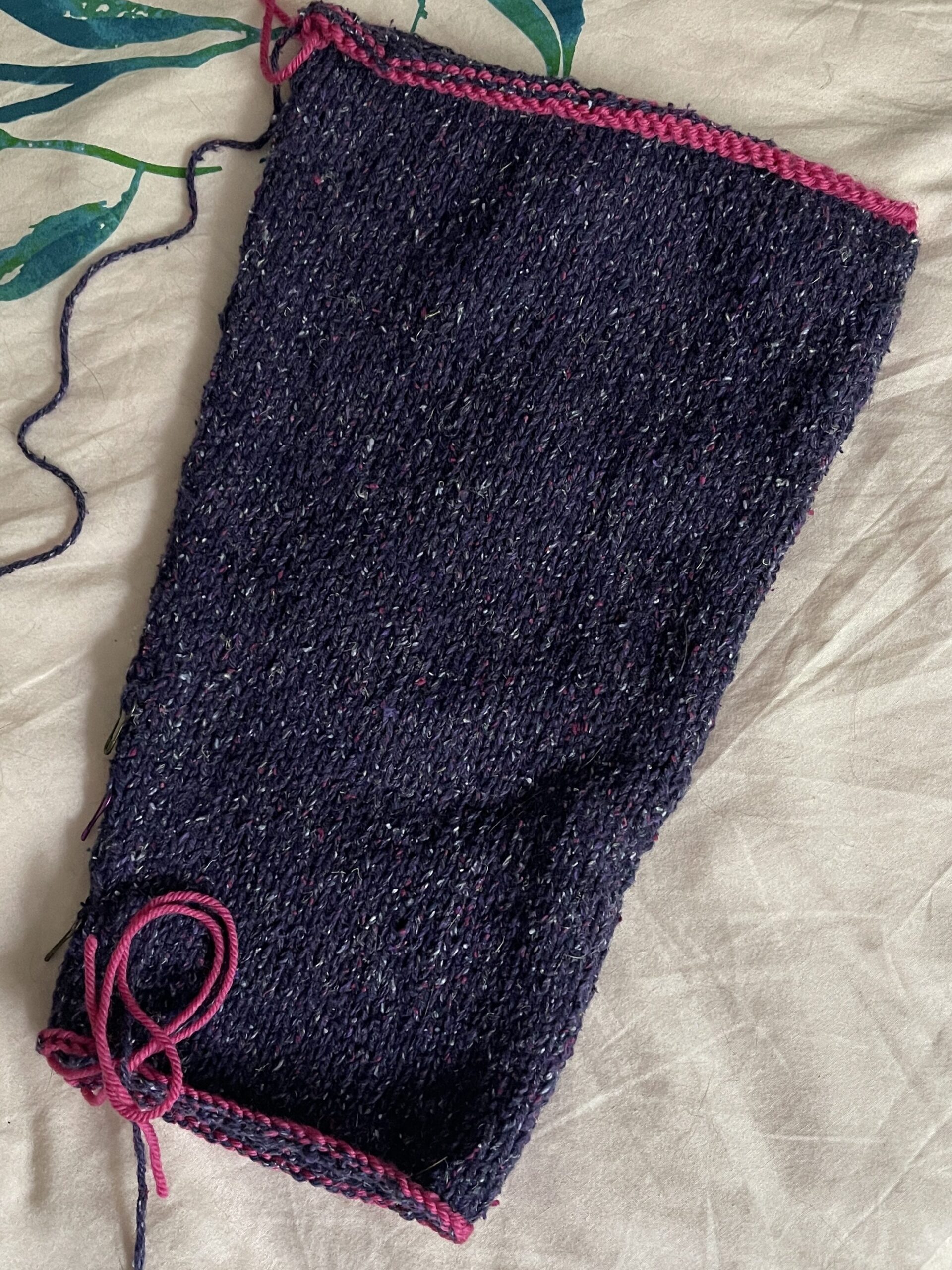I’ve talked about how I knit a swatch before, and probably will again. Today I’m focusing on how I knit swatches that are more “honest” and allow you to start your project faster.
What’s that you say? “I can get an accurate gauge for my knitting and start my project sooner?” My friends, let me introduce you to swatch sleeves.
What on earth is a swatch sleeve?
A swatch sleeve, or sleeve swatch, however you prefer, is a swatch that is also the first sleeve of your garment project. Obviously if your project is not a garment, you will not have sleeves to swatch. If your project is a sleeveless garment, I’ll talk about that in a different post.
All you’re really doing is knitting a sleeve before doing anything else. I’m already a fan of knitting sleeves separately. This just prioritizes the sleeves so that you can effectively start your project while getting a swatch that won’t really lie to you.
Don’t I have to swatch before I cast-on?
No. You’ve never had to swatch before starting a project. It’s just a really really really good idea. But you’ll also hear that “swatches lie!” and they can, especially when we don’t knit large enough swatches. If you’re sticking with a traditional (non-sleeve) swatch, I always recommend casting on at least 50 stitches (depending on the yarn weight you’re using, there’s wiggle room there). And then you need to knit a lot, preferably at least 6″. And you need to make sure that you’re knitting the same way you’ll knit the garment: in the round or flat, on the same needles, etc.
Let’s say your pattern is knit in the round. If you cast on 50 stitches and knit in the round for at least 6″, guess what? You’ve basically started a sleeve. So why not cut out the middle knitter and just knit the sleeve?
A note about swatch sleeves: Anyone can use this method, though I do think a certain level of confidence and understanding knitting fabric is really helpful. Understanding how having a fabric that you like and that you will wear is crucial, and that goes for any swatching. This method is a bit of a short cut, and has worked for me consistently since I adopted it many years and sweaters into my knitting journey. But we all know short cuts don’t always save us time in the end.
Knit a Swatch Sleeve, Bottom Up Edition
Bottom up sweaters, like my Solkatla (from Lopi No. 36; limited sizing), already start with the sleeves knit separately. So just start with a sleeve. You have to knit them anyway! It really doesn’t matter the order in which the body or sleeves are knit.

Pick the pattern size that you’re thinking will be what you want in the end. Let’s say I’m aiming for a few inches of positive ease, maybe a 54″ chest. (Solkatla’s sizing is not inclusive, so I’m adjusting the sizing anyway). Just find the part of the pattern that says Sleeves. Then find the numbers for the size closest to your desired finished size, and start knitting.

After a few inches, you’ll have worked whatever cuff the sweater has and some increases to start for the forearm shaping. You’ll be able to see if you like the fabric–this is always the most important part of swatching. If you don’t like the fabric, decide if it’s too stiff or too open and airy. If it’s too stiff, you’ll want to go up a needle size, which may mean going down a size in the pattern. Too open and airy, try a smaller needle size, and maybe going up a size in the pattern (if that’s available and/or you feel comfortable doing the math).
If you are liking the fabric, just keep knitting as instructed in the pattern. When you’re finished, you can grab some waste yarn and either slip the stitches to the waste yarn or “provisionally” bind off the stitches. Once the live stitches are secure, measure your pre-block gauge. Wash and block the sleeve as you would for the whole sweater. Once dry, measure the post-block gauge to check for differences and to compare to the gauge of the pattern.
Knit a swatch sleeve, top-down edition
A little more complex, and you’ll need to be friends with grafting. The same principles of determining the size you want to to knit and finding the instructions for the sleeves apply. I wrote about this in more depth in my Knitting Sleeves Separately blog (linked above), but you’ll need to determine how many stitches the sleeve has once you add in the cast-on stitches. Here I’ll use my Ginsan (from Moon & Turtle) swatch sleeve as an example.

At the beginning of the sleeves section, the pattern says “Return x number of sleeve sts to the needle.” But that’s not all the stitches that I need. The next part of the instructions is to pick up and knit stitches from the underarm of the body. I’ll need to include those stitches in my cast on. The end of the paragraph includes a total stitch count, so that’s what I used to cast on for my swatch.
I began with waste yarn and a long tail cast on. Once the body of the cardigan is finished, I’ll graft the sleeve to the body. In this instance, I also bound off with waste yarn, so I can make sure the sleeves are long enough.
Deciding if your swatch is right for your project
Those are the technical details of knitting a swatch sleeve. They’re pretty similar to just knitting a swatch. The trick with choosing to knit a sleeve as your swatch is that you have to develop a feel for understanding the fabric.
In both the examples I used, I’m pretty familiar with the yarns. Solkatla is knit with Lettlopi and I’ve knit numerous sweaters with that yarn. I’m knitting Ginsan with Berroco Remix, which is another yarn I’m pretty familiar with. So I know how they will behave. By this point I know that US 7s and Lettlopi give me the fabric I want for colorwork sweaters. As long as the pattern gauge isn’t too wild, I almost don’t even need to worry about washing and measuring gauge. (But I still do!)
What if I don’t know the yarn? I know enough about how I like knitted fabric to feel in different scenarios. So I can start knitting a swatch sleeve and determine early on if I want to keep going with it. If I’m on the fence, I’ll measure, wash, and re-measure early on, rather than finishing the sleeve. Sometimes that means ripping out and starting over. Which also happens with a more traditional swatch. But sometimes everything works out how I envision it and then I already have one sleeve done.
I’ll definitely take those odds. Especially since I have a sweater queue that is a mile long.
Would you try this swatching method? Have any questions? Let me know in the comments!


[…] A provisional cast on is just a cast on that you can take out later. Many people use a crochet chain to start. Another variation is to crochet directly onto the needle. You can also just cast on with waste yarn and work a row or two to make it easier to unpick later. I will usually do this when working a swatch sleeve. […]
[…] that said, I am of course on my own bullshit and had to deviate from …everything. I knit the sleeves first, using the numbers for the 60″ sweater size. After washing and blocking my sleeve swatch, I […]
[…] I say this is years in the making, I mean it. I knit my swatch sleeves …sometime before 2019 probably. But didn’t get around to even starting the body. Which […]
[…] sweater, which I have been longing for since she first posted photos. I’m almost done with my sleeve swatch and I wish I could wear this sweater right […]